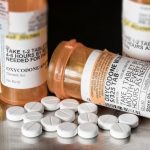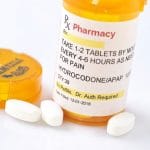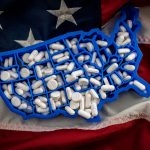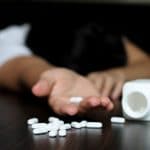In 2019, more than 70,000 people in the United States suffered a fatal drug overdose. More than 14,000 of those deaths involved prescription opioid drugs.
Local government agencies and health departments can increase awareness about the risks of prescription drugs, increase access to treatment programs, and reduce stigmas associated with addiction.
Prescription drug monitoring programs (PDMPs), medication-assisted treatment (MAT) programs, and comprehensive treatment services have been implemented in many communities across the country to reduce overdose deaths.
Prescription Drug Overdose Death Rates
Prescription drugs, including opioids, stimulants, and benzodiazepines, can be beneficial in treating a wide-range of physical and psychological health problems. However, many of these drugs also have a high risk of misuse and overdose.
Opioids
Millions of people suffer with chronic or severe pain, which can be treated with opioid medications. However, an increase in opioid prescriptions over the past two decades has contributed to a rapid rise in addiction, overdose, and drug-related fatalities.
Prescription opioid painkillers, like oxycodone, have played the biggest role in prescription medication deaths. Prescription opioids are responsible for about 28 percent of all drug overdose deaths in the United States.
According to the Substance Abuse and Mental Health Services Administration (SAMHSA), a National Survey on Drug Use and Health (NSDUH) 2020 report found that more than 10 million people abused opioids, the majority of which were prescription opioids.
The National Institute on Drug Abuse (NIDA) reported important changes in the rate of prescription opioid overdose deaths throughout the opioid crisis:
- there were about 3,442 prescription opioid deaths in 1999
- there were about 17,029 prescription opioid deaths in 2017
- prescription opioid overdose death rates decreased 7 percent in 2019
- the rate of opioid deaths involving fentanyl has been rapidly increasing
Stimulants & Benzodiazepines
Although opioids are responsible for the highest fatality rates in the United States, stimulants and benzodiazepines can also be dangerous. More than 90 percent of benzodiazepine-related deaths and 50 percent of stimulant-related deaths also involved an opioid.
Mixing benzodiazepines (benzos) and opioids is especially dangerous because both drugs are depressants that slow breathing and heart rate. Combining depressant drugs worsens these effects and puts you at an increased risk of overdose.
According to the Centers For Disease Control and Prevention (CDC):
- benzos are involved in about 17% of all overdose deaths
- stimulants are involved in about 23% of all overdose deaths
- prescription benzo overdose deaths increased about 22% from 2019-2020
- at least 5 million people abused prescription stimulants in 2020
- stimulant drug overdose death rates increased 28% from 2018-2019
Overdose Prevention
As addiction and overdose rates continue to rise, prevention efforts are a crucial aspect in helping communities and individuals who may be at risk.
Healthcare providers, emergency departments, public health departments, and treatment specialists collaborate to increase awareness and access to resources. Improving opioid prescribing methods, preventing opioid abuse, and treating addiction may help lower overdose rates.
The major goals of overdose prevention are to:
- increase access to addiction treatment services
- decrease prescription drug abuse
- increase access to prevention tools, like Narcan
- increase access to harm reduction services
The CDC gathers research and follows trends on drug use to gain a better understanding of addiction. They provide communities across the country with recovery resources and education on evidence-based treatment services.
Medication-Assisted Treatment (MAT)
MAT programs are an effective combination of medication and behavioral therapy or counseling. FDA-approved medications, including buprenorphine and methadone, can help reduce opioid cravings and drug abuse.
Overdose Treatment
Opioids can dangerously slow heart rate and breathing, which may lead to an opioid overdose. If you notice signs of overdose in a loved one, including shallow breathing and loss of consciousness, you should seek medical help immediately.
Many states have increased access to Narcan (naloxone), an opioid antagonist that can reverse overdose symptoms. If you have it on hand, you can administer Narcan while waiting for medical help to arrive.
Prescribing Methods
Opioids are powerful painkillers most effective for severe or chronic pain. They should only be used after trying other methods of pain management, including over-the-counter pain relievers.
Prescription drug monitoring programs (PDMPs) are electronic databases that record prescription drugs with a high risk of abuse, like opioids and stimulants. This data helps reduce doctor shopping, over-prescribing, and prescribing dangerous combinations of drugs.
Opioid Use Disorder (OUD) Treatment
Access to local treatment services, including detox, rehab, and aftercare programs can help reduce overdose deaths. Treatment facilities should utilize evidence-based strategies, like behavioral therapy, and offer individualized treatment.
To learn how Northeast Addictions Treatment Center supports personalized addiction treatment, contact a specialist today.
Sources
- Centers For Disease Control And Prevention (CDC) — Prescription Opioid Data
- Centers For Disease Control And Prevention (CDC) — Preventing Opioid Overdose
- National Institute On Drug Abuse (NIDA) — Overdose Death Rates
- Substance Abuse And Mental Health Services Administration (SAMHSA) — Preventing Overdose And Death
- U.S. Department Of Health And Human Services — Overdose Prevention Strategy
Written by
Northeast Addition Editorial Team
©2024 Northeast Addition Center | All Rights Reserved
This page does not provide medical advice.




